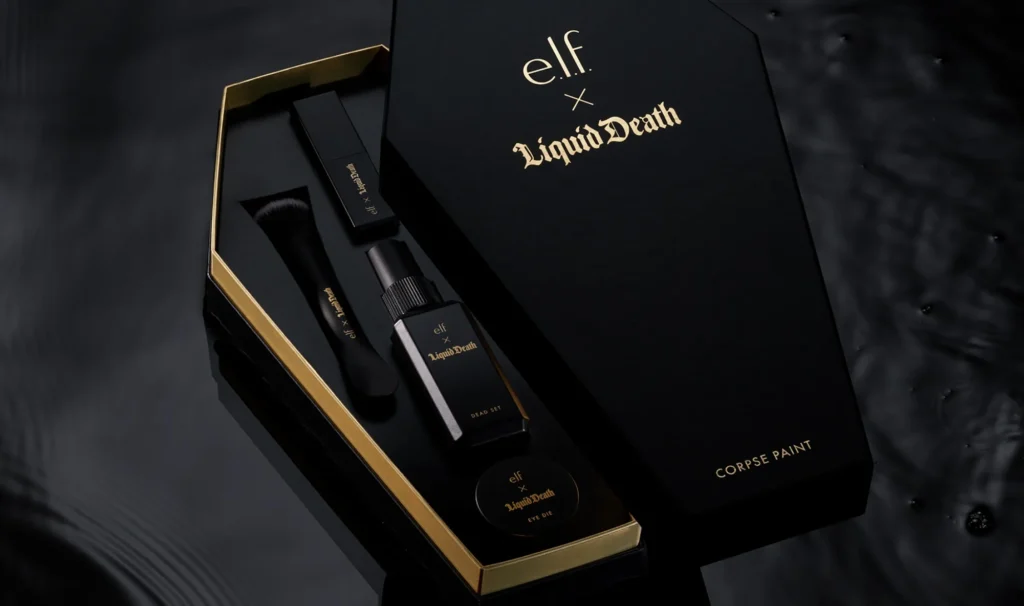Brand Partnerships: A 2025 Guide
Brand partnerships are becoming a cornerstone of modern marketing, with 76% of businesses recognising their pivotal role in driving growth*. As economic pressures mount and marketing budgets shrink, brands are increasingly looking for cost-effective and innovative ways to expand their reach.
Strategic brand partnerships allow businesses to amplify their marketing efforts, increase brand exposure and unlock new opportunities. This guide explores the latest trends, opportunities and challenges in brand partnerships for 2025, providing actionable insights to help brands build successful collaborations.
What are Brand Partnerships?
Brand partnerships are a powerful strategic approach that enables two or more companies to work together toward shared objectives. These collaborations create mutual benefits such as market expansion, cost efficiency and enhanced brand credibility.
At their core, brand partnerships are about:
- 🚀 Achieving More Together: Brands can accomplish greater results when they collaborate rather than working in isolation.
- 🌟 Identifying and Seizing Opportunities: Finding shared goals and leveraging combined strengths to create meaningful outcomes.
- 👨👩👦 Pooling Resources and Capabilities: Combining knowledge, distribution networks, technology and talent to drive mutual success.
- 📈 Building Innovative Campaigns and Strategies: Co-developing marketing efforts that amplify brand messaging and audience engagement.
- 🎨 A Discipline and a Process: Brand partnerships are not just a concept, they are a structured marketing discipline that requires strategic planning and execution.
Collaboration is fundamental to progress, whether in business or society. Partnerships have the potential to create stronger, more resilient brands whilst delivering enhanced value to consumers. Yet, despite their many benefits, brand partnerships remain an underutilised strategy in many industries.
Many companies focus solely on their internal brand strategies, missing the opportunities that external collaborations offer. However, by shifting perspective and looking beyond individual challenges, businesses can tap into consumer-driven opportunities and address them collectively. This mindset fosters innovation, market adaptability and consumer loyalty.
Why Brand Partnerships Matter in 2025
Brand partnerships are no longer just an optional marketing strategy; they are a fundamental driver of success in an increasingly competitive and fast-paced business landscape. In 2025, partnerships are playing a crucial role in helping brands navigate economic challenges, technological advancements and shifting consumer expectations. Whether through cross-industry collaborations, influencer marketing or CSR initiatives, companies that invest in strategic partnerships can unlock new growth opportunities, enhance brand credibility and maximise resource efficiency. Here’s why brand partnerships are more important than ever in 2025.
1. Strategic Growth 📈
With 76% of businesses emphasising partnerships as a growth strategy, collaborations have become essential for standing out in competitive markets.
2. Diverse Collaboration Models 🔄
From influencer marketing to cross-industry alliances, brands are diversifying their partnerships to reach broader audiences.
3. Economic Adaptation 💰
In an era of cut budgets, partnerships allow brands to pool resources, minimise costs and offer greater value to customers.
4. Technological Advancements 🤖
AI, data analytics and automation are transforming how brands identify, execute and optimise partnerships, ensuring highly personalised and efficient collaborations.
Challenges and Tripwires in Brand Partnerships
While partnerships offer numerous advantages, they also present challenges:
Cultural (Mis-)Alignment
Misaligned brand values can lead to ineffective campaigns. A partnership may appear promising on the surface, but if the core values of the collaborating brands are not aligned, the message can feel disjointed or inauthentic to consumers. For example, a luxury fashion brand partnering with a budget retailer might create confusion among their respective customer bases, diluting brand positioning and trust. To avoid this, businesses should conduct thorough research to ensure brand synergy, shared audiences and consistent messaging before committing to a partnership.
Technological Shifts
Brands must stay agile to keep up with rapidly evolving digital trends. The rise of AI, automation and data-driven personalisation means that traditional partnership models may not be as effective as they once were. Brands that fail to adapt to new technologies risk falling behind competitors who leverage advanced tools for customer insights, targeted marketing and seamless integration of omnichannel experiences. Successful partnerships require agility and a forward-thinking approach to technological adaptation, ensuring that both brands benefit from emerging innovations rather than being disrupted by them.
Key Opportunities for Brand Partnerships in 2025
1. Cross-Industry Collaborations 🔄
Brands from different industries can merge expertise and audiences to create unique offerings, such as fitness apps partnering with nutrition brands for holistic wellness solutions.
2. Joint Marketing Campaigns 📢
Collaborative campaigns on social media, co-hosted events and content-sharing strategies allow brands to tap into each other’s audiences for higher engagement.
3. Content Partnerships ✍️
Co-creating content with influencers or complementary brands enhances storytelling and audience reach.
4. Market Expansion 🌍
Strategic partnerships provide access to new customer segments and geographical markets with minimal upfront investment.
5. Increased Brand Exposure 🔥
By aligning with strong partners, brands can increase visibility and credibility across new channels.
The 8 Main Types of Brand Partnerships
Brand partnerships come in various forms, each serving different strategic purposes. Whether brands are looking to acquire new customers, enhance loyalty or innovate through collaboration, choosing the right type of partnership is key to success. Below are the eight most common types of brand partnerships and their key benefits.
1. Acquisition Partnerships
Designed to attract new customers through joint promotions, acquisition partnerships help brands tap into each other’s audience, often through special offers, co-branded campaigns or bundled deals. These collaborations are especially effective in industries with complementary services or products.
2. Loyalty & Retention Partnerships
Loyalty-focussed partnerships aim to retain existing customers by offering exclusive rewards, discounts or benefits. Brands integrate their loyalty programmes, allowing customers to earn and redeem perks across multiple brands, creating a seamless and rewarding experience.
3. Promotional Partnerships
These are short-term collaborations designed to capitalise on key seasonal moments, product launches or limited-time campaigns. Promotional partnerships leverage hype, urgency and exclusivity to engage audiences while increasing brand visibility and sales.
4. Innovation Partnerships
In this form of collaboration, brands work together to develop new products or services that leverage their combined expertise. By merging resources, knowledge and technology, innovation partnerships drive industry advancements and create market-defining offerings.
5. Sponsorship
Sponsorships involve brands financially backing events or individuals in exchange for branding opportunities. These partnerships are commonly seen in sports, entertainment and large-scale events where visibility and brand alignment are key objectives.
6. Revenue-Generating Partnerships
These partnerships focus on direct financial gains, such as affiliate programmes, commission-based collaborations or revenue-sharing models. They allow brands to monetise their partnerships while expanding their market reach.
7. CSR (Corporate Social Responsibility) Partnerships
Brands align with charities, sustainability initiatives or social causes to enhance their reputation and contribute to meaningful change. CSR partnerships resonate with consumers who prioritise ethical and socially responsible brands, strengthening brand loyalty and trust.
8. Coalition Partnerships
Coalition partnerships involve multiple brands collaborating under a unified loyalty programme or shared initiative. These collaborations pool resources to provide collective benefits to customers, often seen in coalition loyalty programmes across industries like travel and retail.
Selecting the right type of partnership depends on a brand’s goals, target audience and industry landscape. A successful collaboration can boost brand awareness and engagement, and enhance customer loyalty. By understanding these different types of brand partnerships, brands can make informed decisions and maximise their strategic alliances for long-term success.
Consumer Trends Shaping Brand Partnerships in 2025
Brand partnerships in 2025 are driven by evolving consumer expectations, where engagement, cultural relevance and unexpected collaborations play a critical role. Innovative partnerships that blend industries, aesthetics and experiences are capturing consumer attention and driving virality.
Some Successful Brand Partnerships

Nike x SKIMS
This partnership merges Nike’s cutting-edge performance technology with Skims’ signature minimalism and body-contouring expertise to create a next-generation women’s activewear brand. Will collaborations like #NikeSKIMS set a new precedent for brand co-creation rather than simple product tie-ins?
Charlotte Tilbury x F1 Academy
A unique collaboration that blended high-fashion make-up with motorsports, to empower female drivers and appeal to a growing female fanbase in Formula 1.


Polly Pocket x Airbnb
This partnership brought nostalgia to life by designing a life-sized Polly Pocket slumber party experience, highlighting immersive brand mashups that resonate with multi-generational audiences.
Liquid Death x e.l.f. Cosmetics
A bold collaboration that blended edgy humour with beauty, creating a viral campaign that appealed to daring and unconventional consumers.


Export Ultra x Vanilla Ice
A lighthearted and nostalgic campaign where Vanilla Ice reminded consumers to grab their beer before it froze, seamlessly integrating pop culture with product engagement.
These partnerships demonstrate that successful brand collaborations in 2025 are those that creatively engage audiences by combining unexpected elements, cultural trends and interactive experiences.
- Omnichannel Experiences: Consumers expect seamless integration across digital and physical touchpoints.
- Cultural Relevance: Authenticity in partnerships is key to maintaining consumer trust.
- Influencer & Community Impact: Social proof and peer recommendations influence purchasing decisions more than ever.
- Trust & Advocacy: Effective partnerships can drive consumer loyalty and differentiation in crowded markets.
Pimento connects brands with top marketing specialists, agencies and consultants to craft strategic, high-impact partnerships. Whether you need expert advice, tailored campaigns or the right collaborators, Pimento’s flexible network helps brands maximise growth, efficiency and innovation. With access to a full service marketing mix, we offer tailor-made solutions that align with your brand’s goals, ensuring long-term success.

Why media strategy is the next growth frontier for education marketing
This year, UK higher education has seen record student numbers. While this is very positive for the sector, it has […]
Read more.
Education Marketing: Why Video Is the Secret Weapon for Schools and Universities
Education marketing is evolving at lightning speed. With families, students and life-long learners expecting authenticity and transparency, institutions face increasing […]
Read more.
